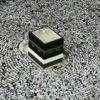හජ්ජී උත්සවය
Eid al-Adha is the second of two religious holidays celebrated by Muslims worldwide each year. It honors the willingness of Abraham (Ibrahim) to sacrifice his young first-born son Ishmael (Ismail)a as an act of submission to God's command, before God then intervened to provide Abraham with a lamb to sacrifice instead.[2] In the lunar-based Islamic calendar, Eid al-Adha falls on the 10th day of Dhu al-Hijjah and lasts for four days.[3] In the international Gregorian calendar, the dates vary from year to year, drifting approximately 11 days earlier each year.
Eid al-Adha is the latter of the two Eid holidays, the former being Eid al-Fitr. The basis for the Eid al-Adha comes from the 196th ayah (verse) of Al-Baqara, the second sura of the Quran.[4] The word "Eid" appears once in Al-Ma'ida, the fifth sura of the Quran, with the meaning "solemn festival".[5]
Like Eid al-Fitr, Eid al-Adha begins with a Sunnah prayer of two rakats followed by a sermon (khutbah). Eid al-Adha celebrations start after the descent of the Hajji from Mount Arafat, a hill east of Mecca. Ritual observance of the holiday lasts until sunset of the 12th day of Dhu al-Hijjah.[6] Eid sacrifice may take place until sunset on the 13th day of Dhu al-Hijjah.[7] The days of Eid have been singled out in the Hadith as "days of remembrance". The days of Tashriq are from the Fajr prayer of the 9th of Dhul Hijjah up to the Asr prayer of the 13th of Dhul Hijjah (5 days and 4 nights). This equals 23 prayers: 5 on the 9th–12th, which equals 20, and 3 on the 13th.[8]



